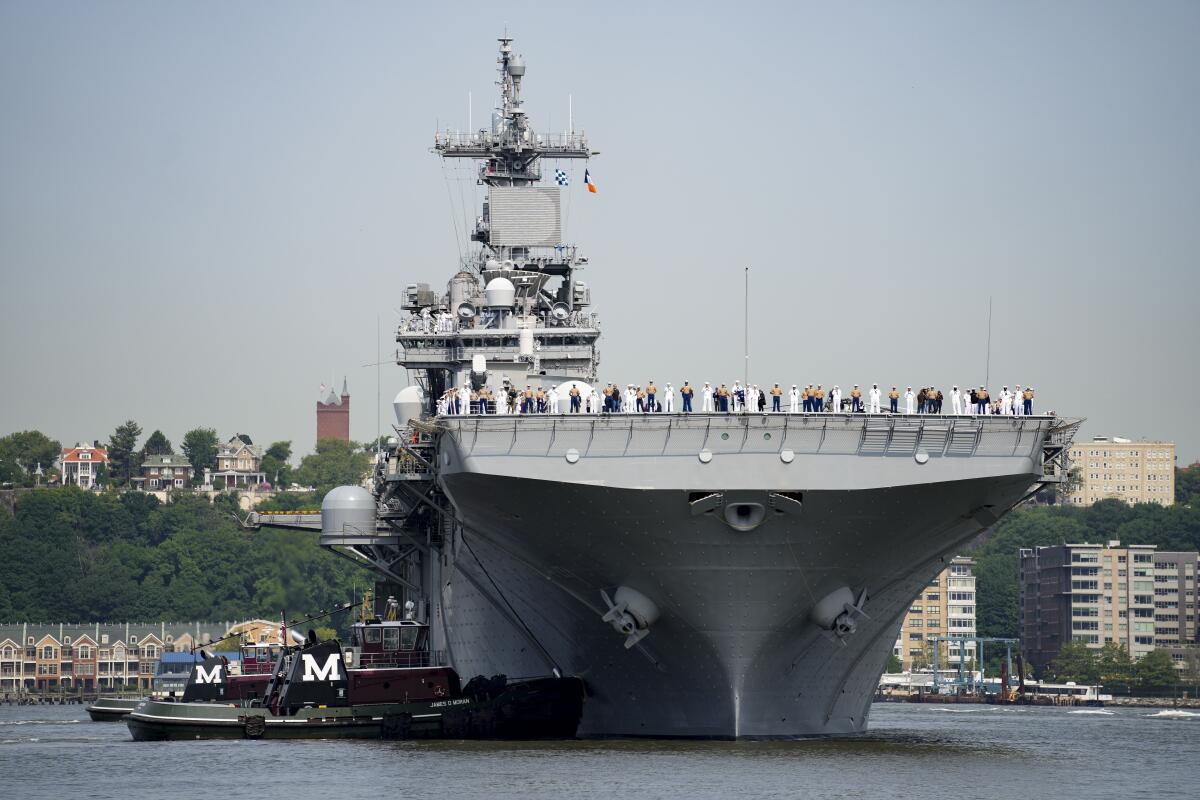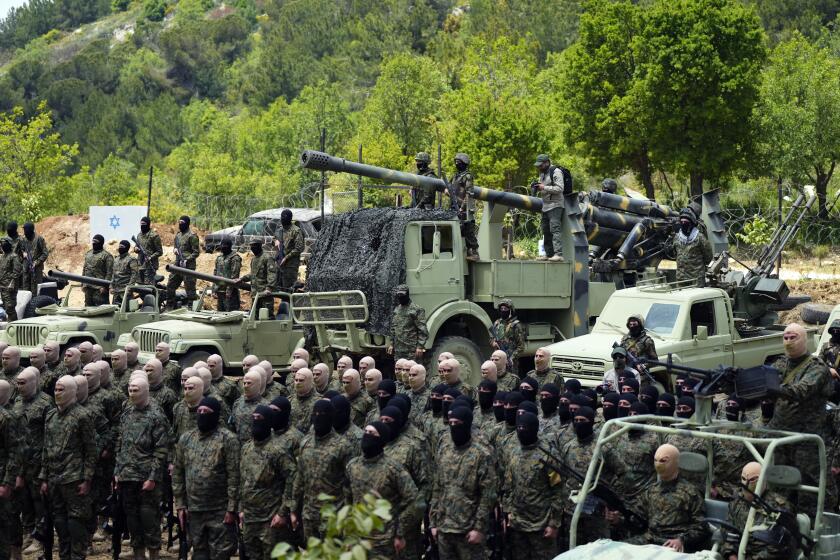U.S. shifts assault ship to the Mediterranean to deter an escalation of Israel-Hezbollah conflict

- Share via
WASHINGTON — The amphibious assault ship USS Wasp entered the eastern Mediterranean Sea this week as the U.S. positions warships to try to keep fighting between Israel and Hezbollah in Lebanon from escalating into a wider war in the Middle East.
While the Wasp has the capability to assist in the evacuation of civilians if full-scale war breaks out between Israel and the Iranian-backed militant group along the Lebanon border, that’s not the primary reason it was rotated in, a U.S. official said. “It’s about deterrence,” the official said.
A second U.S. official said the rotation is similar to the U.S. sending the USS Bataan assault ship into the waters around Israel shortly after Hamas’ Oct. 7 attack, with the vessel remaining for months in the eastern Mediterranean to help provide options and try to contain the conflict. The officials spoke on the condition of anonymity to discuss sensitive operational details.
U.S. officials said last week that the deployment of the Wasp was likely as the USS Dwight D. Eisenhower aircraft carrier and its air wing left the region. The Wasp carries F-35 fighter jets, which do short takeoffs and vertical landings, so they can do airstrike missions off smaller ships.
The escalating war between Hezbollah and Israel — coupled with scorching heat — has sparked fires that are destroying forests and farmland.
U.S. European Command, which is responsible for ships operating in the Mediterranean, announced the move this week, saying the Wasp and the 24th Marine Expeditionary Unit aboard would sail with the dock landing ship USS Oak Hill, which is used to transport Marines, landing craft, vehicles and cargo. The Oak Hill is already in the Mediterranean.
The Wasp also is sailing with the amphibious transport dock ship USS New York, which can deliver troops by either on-deck helicopters or landing vessels.
It all comes as Hezbollah and Israel have exchanged near-daily cross-border strikes since the Oct. 7 attacks that launched the Israel-Hamas war in Gaza, and they have been escalating gradually.
Lebanese officials deny irregularities after media reports alleged Hezbollah stored weapons at the Beirut airport.
A U.S. official said concerns about a major escalation are now lower than they were last week but remain higher than they were last month. The official, who spoke on condition of anonymity to relate internal Biden administration thinking, said the assessment had less to do with Israeli Defense Minister Yoav Gallant’s meetings in Washington this week and more to do with a reduction in attacks from both Hezbollah and Israel in recent days.
The Israeli army said last week that it has “approved and validated” plans for an offensive in Lebanon, although any decision would come from the country’s political leaders.
Gen. CQ Brown, chairman of the U.S. Joint Chiefs of Staff, said Sunday that any Israeli military offensive into Lebanon would risk an Iranian response in defense of Hezbollah, triggering a broader war that could put American forces in the region in danger.
The Eisenhower, based in Norfolk, Va., is returning home after a deployment of more than eight months countering Houthi strikes on commercial shipping in the Red Sea, which the Navy says is its most intense mission since World War II. The San Diego-based USS Theodore Roosevelt will take the Eisenhower’s place.
Copp writes for the Associated Press. AP writer Matthew Lee contributed.
More to Read
Sign up for Essential California
The most important California stories and recommendations in your inbox every morning.
You may occasionally receive promotional content from the Los Angeles Times.












